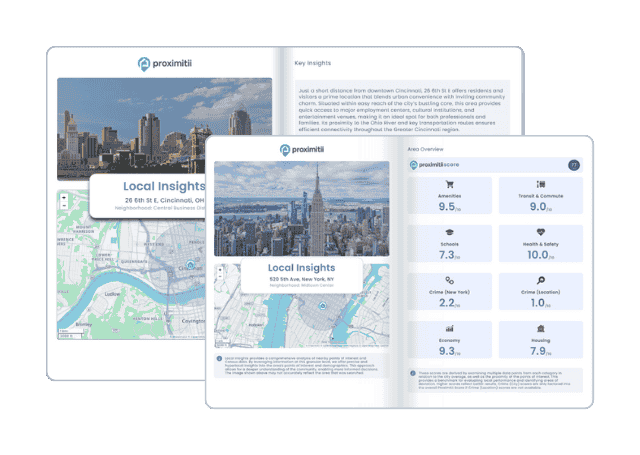| Statistic | Reportedincidents | Military/100k people | Buffalo/100k people | New York/100k people | National/100k people |
| Total crime | 12,361 | 7,763 (estimate) | 4,516 | 2,100 | 2,119 |
| Murder | 34 | n/a | 12.4 | 2.7 | 5.0 |
| Rape | 119 | n/a | 43.5 | 21.7 | 37.5 |
| Robbery | 432 | n/a | 157.8 | 96.1 | 60.6 |
| Assault | 1,348 | n/a | 492.5 | 259.6 | 256.1 |
| Violent crime | 1,933 | 839 (estimate) | 706 | 380 | 359 |
| Burglary | 1,199 | n/a | 438.0 | 136.6 | 229.2 |
| Theft | 7,044 | n/a | 2,573.4 | 1,432.8 | 1,272.1 |
| Vehicle theft | 2,185 | n/a | 798.2 | 150.2 | 258.8 |
| Property crime | 10,428 | 6,924 (estimate) | 3,810 | 1,720 | 1,760 |



Why stop at city-to-city? With Local Insights, you can compare neighborhoods, zip codes, or even exact addresses. Access 300+ hyperlocal data points—from schools and crime to housing and amenities—to see which area is the better fit.

| Item | Military | Buffalo | New York |
| Law enforcement employees (officers & civilians) | n/a | 923 | 109,351 |
| Police officers & civilians /1000 residents | n/a | 3.5 | 2.9 |
| State | Total offenders | New York /100K | National /100K |
| New York | 25,064 | 137 | 266 |
| City | Population | Violent crime/100k people | Property crime/100k people | Total crime/100k people |
| Elma Center, NY | 3,806 | 79 | 359 | 438 |
| Billington Heights, NY | 1,503 | 101 | 458 | 560 |
| Clarence Center, NY | 3,211 | 116 | 525 | 642 |
| Clarence, NY | 2,238 | 132 | 596 | 728 |
| Orchard Park, NY | 3,131 | 154 | 695 | 848 |
| Sanborn, NY | 1,157 | 174 | 788 | 962 |
| Lancaster, NY | 10,087 | 43 | 957 | 1,000 |
| Buffalo, NY | 255,805 | 706 | 3,810 | 4,516 |
| City | Population | Violent crime/100k people | Property crime/100k people | Total crime/100k people |
| Scottsdale, AZ | 254,995 | 153 | 1,875 | 2,028 |
| Lubbock, TX | 257,013 | 821 | 2,629 | 3,450 |
| Chandler, AZ | 257,076 | 133 | 1,504 | 1,638 |
| Madison, WI | 258,366 | 256 | 1,865 | 2,121 |
| Laredo, TX | 260,571 | 366 | 1,465 | 1,831 |
| Buffalo, NY | 255,805 | 706 | 3,810 | 4,516 |